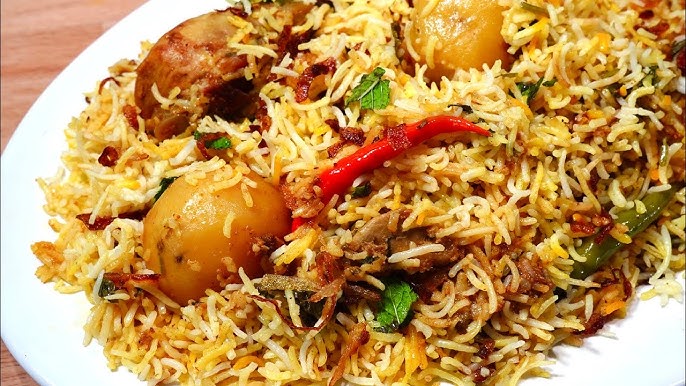

If there’s one dish that truly represents the heart of Indian cuisine, it’s chicken biryani. Rich in flavour, layered with fragrant rice and spiced chicken, biryani is more than just a meal, it’s a celebration on a plate.
Whether you enjoy it during festive occasions or Sunday family feasts, learning how to prepare chicken biryani the authentic way is a must for every food lover. In this blog, we’ll guide you through each step, from biryani masala preparation to the final dum biryani recipe, just like they do in Hyderabad and Mughlai kitchens.
Pro tip: If you're serious about becoming a chef, our culinary arts course is a perfect place to start.
Chicken biryani is a slow-cooked rice dish made by layering marinated chicken with partially cooked basmati rice. It’s infused with aromatic spices and sealed (traditionally with dough) to trap the flavours while it steams; this method is called “dum.”
While there are many regional variations, the Hyderabadi chicken biryani remains one of the most popular, known for its bold flavours and regal presentation.
(Dry roast and grind into a fine powder)
In a large bowl, mix curd, spices, herbs, lemon juice, and oil. Add the chicken pieces and coat well. Cover and refrigerate for at least 2–4 hours. For best results, marinate overnight. This deep marination is key to a flavour-packed biryani.
Wash the rice thoroughly and soak it for 30 minutes. Boil water with whole spices and salt. Add the soaked rice and cook until it’s 70% done—grains should still be firm. Drain and set aside.
Dry roast all whole spices mentioned under biryani masala preparation until aromatic. Cool and grind to a fine powder. This masala will be sprinkled between layers for extra flavour.
In a thick-bottomed pan or handi: Grease the base with ghee. Spread the marinated chicken at the bottom. Add half the rice on top of the chicken. Sprinkle some biryani masala, fried onions, chopped mint, and coriander. Add the remaining rice and repeat the toppings. Drizzle saffron milk and a spoonful of ghee on top.
Cover the pan with a tight-fitting lid. Seal the edges with dough if needed. Cook on medium flame for 5 minutes, then on low flame for 25–30 minutes. Alternatively, place a tawa under the biryani pot and cook on low for 30 minutes (to avoid direct heat).
After dum, let the biryani rest for 10 minutes. Gently fluff the rice from the sides using a flat spoon. Serve hot with raita, boiled eggs, or salan (gravy).
Pro tip: If you're searching for the best baking school near me, our expert-led courses are just what you need.
This style uses raw marinated chicken layered with semi-cooked rice, which is then steamed together. It differs from Lucknowi biryani, where chicken and rice are cooked separately.

Bakery & Pastry Specialist
The secret lies in slow dum cooking, fresh spices, and proper marination. TGCA teaches students to balance biryani masala preparation and layering techniques to achieve restaurant-style results.
Marinate for at least 2 hours; overnight is best for deep flavour penetration and tenderness.
No. Rice should be 70% cooked so it finishes cooking during dum, without turning mushy.
Basmati is preferred for its aroma and texture. Regular rice won’t offer the same quality or appearance.
It uses raw chicken and dum cooking, allowing flavours to merge during steaming, unlike pre-cooked methods.
It’s possible, but not ideal. Dum cooking delivers better texture and flavour control.
Yes, freshly ground masala has stronger aroma and personalised heat levels.
Sprinkle water and cover before reheating. This keeps the biryani moist and flavourful.
Recipe Features
Recipe Categories
Click one of our representatives below to chat on WhatsApp or send us an email to
info@tedcoeducation.com
Counselor
Bakery and Pastry Courses
Counselor
Culinary Arts Courses
Click one of our representatives below to chat on WhatsApp or send us an email to
info@tedcoeducation.com
Counselor
Bakery and Pastry Courses
Counselor
Culinary Arts Courses